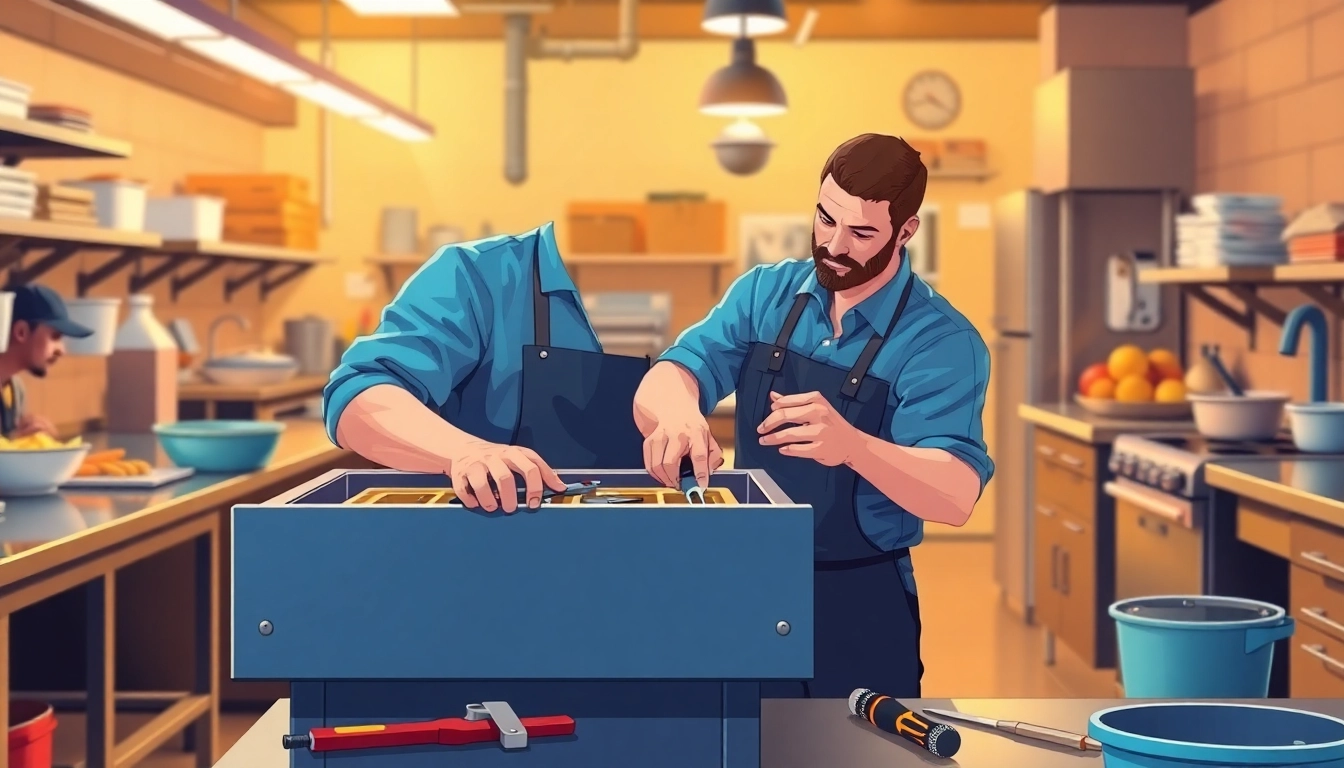Understanding Prep Table Components
Overview of Common Parts
In the bustling environment of commercial kitchens, prep tables serve as indispensable tools for food preparation and service. These specialized tables integrate various components that contribute to their functionality and efficiency. The main components of a prep table typically include:
- Work Surface: Often made from stainless steel, this durable surface is where most food prep activities occur. It is designed for easy cleaning and resistance to stains and scratches.
- Refrigeration System: A crucial aspect of refrigerated prep tables, this system keeps ingredients fresh by maintaining optimal temperatures. It can include compressors, evaporators, and condensers.
- Storage Areas: These often consist of drawers or shelves, where ingredients are stored at a safe temperature for quick access. The design may vary, including deep drawers for larger items.
- Controls: The thermostat and other controls allow the user to manage the temperature settings effectively to ensure ingredient safety.
- Grill Tops or Heat Sources: Some prep tables include hot surfaces for warming food as it’s being prepared for service.
Identifying Wear and Tear
Like any kitchen equipment, prep tables undergo wear and tear over time. Identifying these issues early can save time and repair costs. Common signs of wear and tear include:
- Rust and Corrosion: Often found on metal surfaces, rust can compromise the integrity of work surfaces and other components.
- Temperature Inconsistencies: If the refrigeration system is not maintaining proper temperatures, this could indicate a malfunctioning thermostat or compressor.
- Physical Damage: Scratches, dents, and signs of deterioration can affect food safety and hygiene.
Regular inspections can help in identifying these issues before they escalate into significant problems.
Importance of Regular Maintenance
Regular maintenance of prep tables is vital for ensuring long-lasting performance and safety. Implementing a maintenance schedule helps in…
- Ensuring consistent preparation environments for food safety.
- Extending the life of the equipment, reducing the need for costly repairs.
- Enhancing kitchen efficiency through swift service.
Regular cleaning, inspections, and temperature checks are key elements side-by-side with professional servicing when necessary.
Common Issues in Prep Table Repair
Thermostat Failures
Thermostats are the brain of the refrigeration system, controlling the cooling process. If a thermostat malfunctions, it can lead to improper temperature management.
Identifying thermostat issues can be done through the following:
- Many digital models provide error codes; refer to the manual to decipher these.
- Check if the temperature meter aligns with the actual temperature inside the prep table using a separate thermometer.
If you suspect a malfunction, contact a professional or explore comprehensive guides on prep table repair to evaluate whether you can perform the repair yourself.
Poor Insulation and Seals
Insulation and door seals are essential for maintaining temperature and energy efficiency. A worn seal can lead to cold air escaping, forcing the cooling system to work overtime, resulting in higher energy bills and food safety risks.
To assess insulation and seals:
- Inspect the door seals for cracks and gaps.
- Perform a dollar bill test—close the door on a dollar bill and try to pull it out. If it slides out easily, the seal may need replacement.
Refrigeration Problems
Refrigeration problems are among the most common issues faced with prep tables. These can range from compressor failures to clogged condensate drains. Identifying the root cause is essential to address the issue properly:
- Compressor Failures: If the compressor is functioning intermittently or not at all, this could indicate a need for replacement.
- Blocked Drainage: Ensure that the drainage system isn’t obstructed by food debris, which can cause excess moisture and leak issues.
- Ice Buildup: Regular maintenance should include defrosting, as sometimes frozen lines can lead to circulation problems.
Step-by-Step Prep Table Repair Process
Initial Assessment
Before diving into repairs, conducting a comprehensive assessment is essential. This includes understanding the symptoms, inspecting key components, and gathering necessary tools and parts. Documenting any issues seen during the assessment will assist in keeping track of repairs and prevent overlooking any critical steps.
Disassembly and Cleaning
Once issues have been identified, disassembling the prep table safely without damaging components is crucial. Make sure to:
- Unplug the unit to ensure safety during disassembly.
- Carefully remove drawers, shelves, and components to access the refrigeration system.
- Thoroughly clean and sanitize all areas exposed during disassembly.
Cleaning not only helps in maintaining hygiene but allows for a clear view of components requiring repair or replacement.
Reassembly and Testing
Once repairs and cleaning are completed, the next stage involves reassembling the prep table. Ensure all parts are secured tightly and conform to their original state. After reassembly:
- Power the unit back on and monitor its performance.
- Check the temperatures and ensure they align with food safety guidelines before putting food back inside.
Tools and Equipment for Effective Repairs
Must-Have Tools
Every technician should stock the necessary tools to perform repairs efficiently:
- Basic Hand Tools: Wrenches, screwdrivers, pliers, and socket sets are essential for disassembly.
- Thermometers: Round out your toolkit with digital and analog thermometers to measure accurate temperatures during repairs.
- Multimeter: This can help diagnose electrical issues in the refrigeration system.
Safety Equipment
Safety should not be compromised during repairs. Employ these essential equipments:
- Gloves: Protect your hands from sharp edges and chemicals.
- Safety Glasses: Prevent injuries from debris when working on components.
- Work Boots: Steel-toe boots help guard against heavy items potentially falling during the repair process.
Certified Parts vs. Aftermarket
When sourcing parts for repairs, consider the availability of certified parts versus aftermarket alternatives:
- Certified Parts: These generally come with warranties and guarantees, ensuring reliability and compatibility with your equipment.
- Aftermarket Parts: While often less expensive, these may not always meet the same quality standards and could compromise the safety and performance of the prep table.
Research and opt for parts that best suit your needs and budget while keeping in mind the longevity and efficiency of your prep table.
When to Call a Professional for Prep Table Repair
Signs You Need Expert Help
Even the most skilled DIYers must recognize when to call in the professionals. Indicators include:
- Major Refrigeration Failures: If the primary cooling system fails, it may require an expert’s intervention.
- Complex Electrical Issues: Complicated wiring problems that challenge troubleshooting can benefit from professional insight.
- Persistent Problems: If the same issue recurs after attempting repairs, this may indicate an underlying problem that needs expert assessment.
Cost Considerations for Professional Repairs
Understanding the cost dynamics of professional prep table repair can help you budget accordingly. Factors influencing repair costs include:
- Type of Issue: Simple repairs typically cost less than those involving significant replacements or complex electrical issues.
- Parts and Labor: The availability of parts and the specific rates charged by technicians in your area can also affect overall costs.
Finding the Right Repair Service
Finding a reliable repair service requires research. Look for companies with strong reviews and testimonials in the kitchen repair niche, especially ones specializing in commercial equipment. Inquire about their warranty offerings on repairs, as this can be a significant factor indicating the quality of their services.



